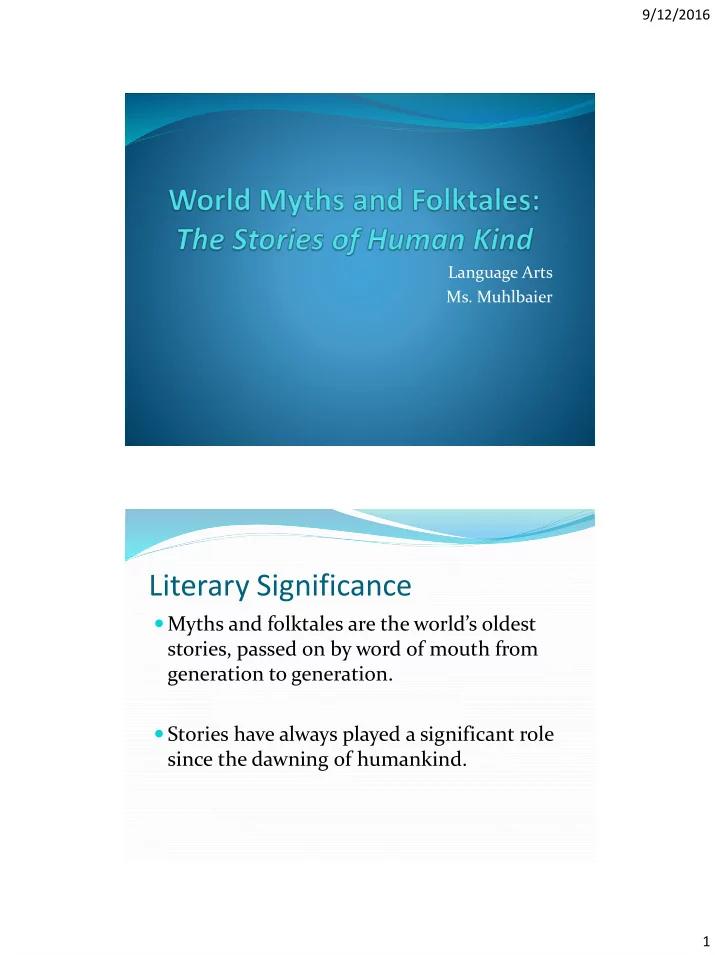

9/12/2016 Language Arts Ms. Muhlbaier Literary Significance Myths and folktales are the world’s oldest stories, passed on by word of mouth from generation to generation. Stories have always played a significant role since the dawning of humankind. 1
9/12/2016 Literary Significance Myths and folktales remain vital to modern readers because they reveal common truths, patterns, and themes that are familiar to all ages and cultures. Myths explain the human experience: Who we are Where we came from What we believe in “…myths and folktales are in some ways even ‘truer’ than history.” -Joseph Campbell 2
9/12/2016 What is a Myth? An anonymous, traditional story that explains a belief, custom, or mysterious natural phenomenon. Functions of Myths: To explain the creation of the world and universe. To explain the human condition: how and why people were created, why they are flawed, why there is suffering in the world, why people must eventually die, and what happens to people after death. To explain natural phenomena — i.e. phases of the moon. 3
9/12/2016 Functions of Myths: To explain the nature of gods and goddesses and how these deities and human beings interact. To explain the meanings behind religious rituals, customs, and beliefs. To explain historical events. To teach moral lessons. Myths were created out of a human need to make sense of the universe and explain how the world and its inhabitants came to be. 4
9/12/2016 The Differences Between Myths and Folktales As myths were retold and retold over generations, they transformed. One of the storytelling forms that arose from the myth was the folktale. What is a folktale? A story created by the “folk”— the common people — and passed along orally from generation to generation. Folktales include legends, fables, tall tales, fairy tales, and ghost stories. 5
9/12/2016 Functions of Folktales: Folktales, unlike myths, are secular, or nonreligious. Folktales were created as much for their entertainment value as for the teaching of social or moral values. Folktales feature more magic, transformations, and enchantments, like myths; however, gods and goddesses are not usually the central characters in the story. Functions of Folktales: Folktale heroes tend to be common, everyday folk who don’t have special powers, unlike the heroes of myths, who are the superhuman offspring of gods or goddesses and human parents. Folktales are not associated with religious rituals. 6
9/12/2016 Folktales are entertaining stories about ordinary people who survive by luck, by using their own wits, and by relying on their own natural goodness. What’s the difference? The most important difference between a myth and a folktale concerns the purposes of each storytelling form. Myths are a direct expression of a culture’s religious beliefs: folktales are not. However, both myths and folktales explain the important truths about life. 7
Recommend
More recommend